Uterine Fibroids: Symptoms, Treatments, and Empowering Solutions Explained
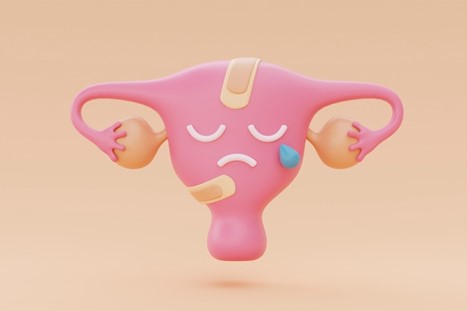
Uterine fibroids, also known as leiomyomas or myomas, are noncancerous growths that develop within the muscular wall of the uterus. They are the most common type of noncancerous tumor found in women of reproductive age. These growths can vary in size, ranging from small, seed-like nodules to large masses that can distort the shape and size of the uterus.
What Are The Types of Uterine Fibroids?
Fibroids are typically classified based on their location within the uterus:
- Intramural fibroids grow within the muscular wall of the uterus and are the most common type. They can cause the uterus to enlarge, leading to symptoms such as pelvic pain and pressure.
- Submucosal fibroids develop just beneath the inner lining of the uterus (endometrium) and can protrude into the uterine cavity. Submucosal fibroids may cause heavy menstrual bleeding and reproductive issues.
- Subserosal fibroids grow on the outer surface of the uterus and can project outward. While they may not cause significant menstrual changes, subserosal fibroids can lead to pelvic pain and pressure if they become large.
- Pedunculated fibroids are attached to the uterus by a stalk-like structure called a peduncle. They can be intramural, submucosal, or subserosal in nature.
Uterine Fibroids Causes
The exact cause of uterine fibroids is not fully understood, but several factors are believed to contribute to their development:
1. Hormonal factors: Estrogen and progesterone, hormones that regulate the menstrual cycle, appear to promote the growth of fibroids. Fibroids tend to shrink after menopause when hormone levels decline.
2. Genetic predisposition: Women with a family history of fibroids are more likely to develop them.
3. Ethnicity: Fibroids are more common in women of African descent compared to women of other ethnicities.
4. Other factors: Obesity, a diet high in red meat and low in fruits and vegetables, and alcohol consumption may also increase the risk of developing fibroids.
BM60 is an effective natural therapy for uterine fibroids, heavy bleeding or painful periods, bleeding between periods, fullness and pressure in the pelvic area, polyuria, pain during coitus, lower back pain, and reproductive problems (e.g., infertility and miscarriage).
What Are The Symptoms of Uterine Fibroids?
Uterine fibroids can cause a variety of symptoms, which may vary in severity depending on the size, number, and location of the fibroids within the uterus. While some women with fibroids may experience no symptoms at all, others may have significant discomfort and disruption to their daily lives. Common symptoms of uterine fibroids include:
- Excessive or prolonged menstrual bleeding is one of the most common symptoms of uterine fibroids. Women with fibroids may experience heavy menstrual flow that can lead to anemia, fatigue, and the need to change sanitary products frequently.
- Fibroids can cause pelvic pain or discomfort, ranging from mild to severe. Some women describe a dull ache or heaviness in the pelvic region, while others may experience sharp or cramping pain. Large fibroids can also lead to feelings of pressure or fullness in the abdomen.
- Besides heavy bleeding, fibroids can cause irregular menstrual cycles, including longer or shorter menstrual periods than usual.
- Fibroids located near the surface of the uterus or within the uterine wall can cause pain or discomfort during sexual intercourse (dyspareunia).
- Large fibroids can pressure the bladder, leading to frequent urination, urgency, or difficulty emptying the bladder completely. This may increase the risk of urinary tract infections (UTIs) in some cases.
- Fibroids pressing on the rectum or intestines can cause constipation, difficulty passing stools, or a sensation of rectal fullness. Some women may also experience bloating or abdominal discomfort.
- In cases where fibroids are large or numerous, the uterus may enlarge, causing a visible increase in abdominal size or a feeling of bloating.
- Fibroids can interfere with fertility and pregnancy in some women. Depending on their size and location, fibroids may obstruct the fallopian tubes or interfere with the implantation of a fertilized egg in the uterus. Fibroids may also increase the risk of complications during pregnancy, such as miscarriage, preterm labor, or delivery by cesarean section.
It's important for women experiencing symptoms suggestive of uterine fibroids to seek medical evaluation and diagnosis by a healthcare provider. While not all fibroids require treatment, management options are available to help alleviate symptoms and improve quality of life.
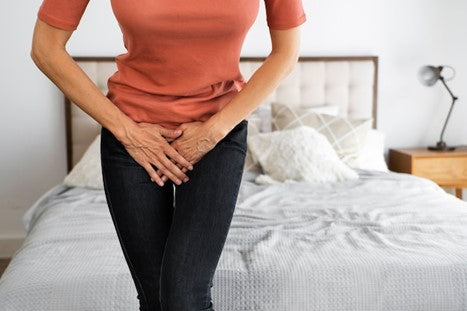
How are Uterine Fibroids Diagnosed?
Diagnosing uterine fibroids typically involves a combination of medical history review, pelvic examination, and imaging tests.
Here's an overview of the diagnostic process:
- During the initial evaluation, your healthcare provider will ask about your medical history, including any symptoms you may be experiencing, menstrual patterns, and reproductive history. Information about your symptoms, severity, and impact on your daily life can help guide the diagnostic process.
- A pelvic examination allows your healthcare provider to assess the size, shape, and condition of your uterus and ovaries. During the exam, your provider may feel for any abnormalities, such as an enlarged or irregularly shaped uterus, indicative of fibroids. However, it's important to note that not all fibroids may be detectable during a pelvic exam, especially smaller or deeper fibroids.
- Imaging tests are essential for confirming the presence of uterine fibroids and determining their size, number, and location within the uterus. Common imaging modalities for diagnosing fibroids include transabdominal or transvaginal ultrasound, magnetic resonance imaging (MRI), and computed tomography (CT) scan.
- In some cases, additional tests may be performed to evaluate symptoms related to uterine fibroids or rule out other conditions. These tests may include blood tests to check for anemia (due to heavy menstrual bleeding) or to assess hormone levels, such as thyroid function tests.
BM36 is useful for myoma, leiomyoma, frequently increased menstruation, bleeding between periods, painful coitus, increased vaginal discharge, ovarian cysts, and swelling without pain in the lower abdomen.
Once a diagnosis of uterine fibroids is confirmed, your healthcare provider will discuss treatment options tailored to your individual needs.
Treatment Options
Treatment options for uterine fibroids depend on various factors, including the severity of symptoms, the size and location of fibroids, and the patient's reproductive goals. Here are several treatment options commonly used for uterine fibroids:
Watchful waiting (Expectant management)
- In cases where fibroids are small and asymptomatic and do not significantly impact a woman's quality of life, a "watch and wait" approach may be recommended.
- Regular monitoring through pelvic examinations and imaging tests (ultrasound) may be conducted to track any changes in the size or symptoms of fibroids over time.
Medications
- Hormonal therapies, such as birth control pills (oral contraceptives), progestin-releasing intrauterine devices (IUDs), or gonadotropin-releasing hormone (GnRH) agonists, may be prescribed by your doctor to help manage symptoms of uterine fibroids by regulating menstrual bleeding and reducing pelvic pain.
- Nonsteroidal anti-inflammatory drugs (NSAIDs), such as ibuprofen or naproxen, may be recommended by doctors to to relieve pain associated with fibroids, including menstrual cramps.

Minimally invasive procedures
- Uterine artery embolization (UAE) is a minimally invasive procedure interventional radiologists perform. It involves injecting small particles into the blood vessels that supply the fibroids, causing them to shrink and die off due to decreased blood flow.
- MRI-guided focused ultrasound surgery (FUS) uses high-intensity ultrasound waves to heat and destroy fibroid tissue while preserving the surrounding healthy tissue. This procedure is guided by real-time MRI imaging to ensure accurate targeting of fibroids.
- Laparoscopic or robotic myomectomy is a surgical procedure to remove fibroids while preserving the uterus. In laparoscopic or robotic myomectomy, small incisions are made in the abdomen, and specialized instruments are used to remove fibroids with minimal scarring and shorter recovery times compared to traditional open surgery.
Surgical interventions
- Hysterectomy involves surgical removal of the uterus and is considered a definitive treatment for uterine fibroids. Depending on the patient's preferences and medical indications, hysterectomy may be performed through traditional abdominal surgery, laparoscopic techniques, or vaginal approaches.
- Hysteroscopic myomectomy: This minimally invasive procedure removes submucosal fibroids that protrude into the uterine cavity. A hysteroscope (a thin, lighted tube with a camera) is inserted through the vagina and cervix into the uterus, allowing the surgeon to visualize and remove fibroids using specialized instruments.
Women must discuss their options with a healthcare provider to develop a personalized treatment plan that addresses their needs and preferences.
Can Natural Remedies Help?
While natural remedies may not eliminate uterine fibroids, they may help alleviate discomfort and improve overall well-being.
BM14 may help your body deal with amenorrhoea, dysmenorrhoea, and cramps in the pelvic region. Useful for painful menses in young women.
Dietary changes
Maintaining a healthy diet can be beneficial for managing uterine fibroids and alleviating symptoms. While dietary changes alone may not shrink fibroids, they can help support overall health and hormonal balance, potentially reducing the severity of symptoms.
- Aim to include a variety of colorful fruits and vegetables in your diet, as they are rich in vitamins, minerals, antioxidants, and fiber. Berries, citrus fruits, leafy greens, cruciferous vegetables (such as broccoli and Brussels sprouts), and colorful peppers are particularly beneficial.
- Opt for whole grains such as brown rice, quinoa, oats, barley, whole wheat bread, and pasta. Whole grains are high in fiber, which can help regulate estrogen levels and promote hormonal balance.
- Incorporate lean protein sources into your meals, such as skinless poultry, fish, tofu, legumes (beans, lentils, chickpeas), nuts, and seeds. Protein-rich foods can help stabilize blood sugar levels and promote satiety.

- Include sources of healthy fats in your diet, such as avocados, olive oil, nuts, seeds, and fatty fish (e.g., salmon, sardines). Omega-3 fatty acids, found in fatty fish and flaxseeds, may have anti-inflammatory properties and can help reduce inflammation associated with fibroids.
- Limit consumption of red meat and high-fat dairy products, as they may contain hormones and other compounds that can exacerbate hormonal imbalances and inflammation. Choose leaner cuts of meat and opt for low-fat or plant-based alternatives to dairy products.
- Minimize intake of processed foods, refined carbohydrates, sugary snacks, and beverages, as they can contribute to inflammation and insulin resistance. Instead, focus on whole, nutrient-dense foods to support overall health and hormone balance.
- Drink plenty of water daily to stay hydrated and support optimal bodily functions.
- Limit consumption of caffeinated and alcoholic beverages, as they can contribute to dehydration and may exacerbate symptoms such as bloating and pelvic pain.
- Phytoestrogens are plant compounds that have weak estrogen-like effects in the body. Consuming moderate amounts of phytoestrogen-rich foods such as soybeans, tofu, flaxseeds, and sesame seeds may help modulate estrogen levels and reduce the risk of estrogen-related conditions like fibroids.
Herbal supplements
While some individuals often use herbal supplements as complementary or alternative treatments for uterine fibroids, it's important to note that scientific evidence supporting their effectiveness is limited. Additionally, herbal remedies may not be appropriate for everyone and may interact with medications or have contraindications for specific medical conditions. It's essential to consult with a healthcare provider or qualified herbalist before using herbal supplements for uterine fibroids.
BM27 may help with a dysfunctional uterus, unexpected vaginal bleeding, post-menopausal or premenopausal issues, piles, and accidental bleeding.
Here are some herbal supplements that have been traditionally used to help with fibroid symptoms:
- Vitex is a popular herb known for its hormonal-balancing properties. It may help regulate menstrual cycles and reduce symptoms such as heavy menstrual bleeding and pelvic pain.
- Dong Quai, also known as Angelica sinensis, is commonly used in traditional Chinese medicine for gynecological issues, including menstrual irregularities and pelvic pain. It is believed to have anti-inflammatory and analgesic effects.
- Milk thistle is often used as a tonic and may support liver function, which is important for estrogen metabolism. Some herbalists suggest that milk thistle may help detoxify the body and reduce estrogen levels, potentially benefiting women with uterine fibroids.
- Turmeric contains a compound called curcumin, which has anti-inflammatory and antioxidant properties. While research on turmeric specifically for fibroids is limited, its anti-inflammatory effects may help alleviate symptoms associated with inflammation.
- Green tea is rich in antioxidants called catechins, which may have anti-inflammatory properties. Some studies suggest that green tea extract may help reduce the size and number of uterine fibroids, although more research is needed to confirm its effectiveness.
- Red clover contains isoflavones phytoestrogens that may have weak estrogen-like effects in the body. Some women use red clover supplements to help balance hormone levels and reduce symptoms of uterine fibroids.
- Raspberry leaf is a traditional remedy that supports uterine health and tones the uterus muscles. While there is limited scientific evidence supporting its use for fibroids, some women find it helpful for menstrual cramps and heavy bleeding.
Lifestyle changes
1. Stress reduction techniques
Chronic stress can exacerbate hormonal imbalances and contribute to inflammation, potentially worsening symptoms of uterine fibroids. Meditation, yoga, deep breathing exercises, and mindfulness techniques can help reduce stress and promote relaxation.

2. Exercise
Regular physical activity, such as walking, swimming, or cycling, can help improve circulation, reduce inflammation, and support overall health and well-being. Aim for at least 30 minutes of moderate-intensity exercise most days of the week.
3. Acupuncture
Acupuncture, an ancient Chinese healing technique involving the insertion of thin needles into specific points on the body, may help alleviate symptoms associated with uterine fibroids, such as pelvic pain, menstrual irregularities, and stress.
4. Heat therapy
Applying heat to the abdomen or lower back (e.g., using a heating pad or warm towel) can help relieve pelvic pain and discomfort associated with uterine fibroids.
5. Pelvic floor exercises
Pelvic floor exercises, such as Kegel exercises, can help strengthen pelvic floor muscles and improve pelvic circulation, potentially reducing urinary urgency and frequency symptoms.
Homeopathic remedies
Homeopathy is a holistic system of medicine that aims to treat the individual, considering health's physical, mental, and emotional aspects. Homeopathic remedies are prepared from natural substances and are prescribed based on the principle of "like cures like," where a substance that causes symptoms in a healthy person is used to treat similar symptoms in a sick person. While some people may find relief from specific symptoms of uterine fibroids with homeopathic treatment, it's essential to approach homeopathy with caution and under the guidance of a qualified homeopathic practitioner.
Some common homeopathic remedies that may be used for uterine fibroids:
- Calcarea Carbonica may be used in women with uterine fibroids who are chilly, overweight, and prone to heavy menstrual bleeding. They may experience cramping pain in the abdomen and feel tired and sluggish.
- Sepia is indicated for women with uterine fibroids who feel irritable, indifferent, and emotionally exhausted. They may experience heavy menstrual bleeding with a bearing-down sensation in the pelvis, along with a dragging or sagging feeling in the uterus.
- Thuja Occidentalis may be recommended for women with uterine fibroids who have a history of hormonal imbalances, such as polycystic ovary syndrome (PCOS) or irregular menstrual cycles. They may experience shooting or stitching pains in the pelvis, along with a feeling of pressure or fullness in the uterus.
- Phosphorus may be prescribed for women with uterine fibroids who are sensitive, sympathetic, and prone to anxiety and fears. They may experience heavy menstrual bleeding with bright red blood, along with weakness and dizziness.
Homeopathic remedies are typically prescribed in highly diluted doses and are considered safe when used as directed. However, it's essential to consult with a qualified homeopathic practitioner for proper diagnosis and treatment of uterine fibroids, especially if you are considering using homeopathy as a complementary therapy alongside conventional medical treatment.
The Bottom Line
Uterine fibroids are a common but often overlooked health issue that can significantly impact women's well-being. By understanding the symptoms, diagnosis, and treatment options for fibroids, women can make informed decisions about their health and take proactive steps toward managing this condition. Empowered with knowledge and support, women can navigate their journey with uterine fibroids with confidence and resilience.



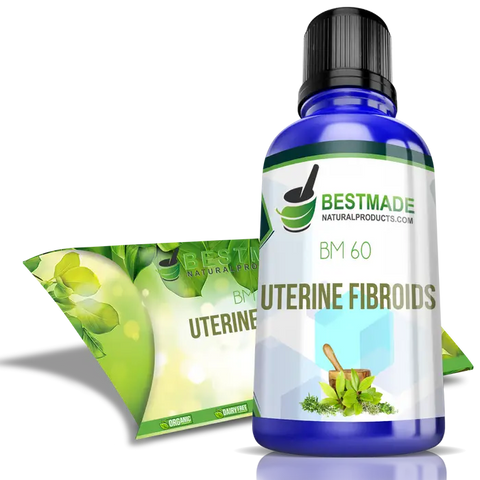
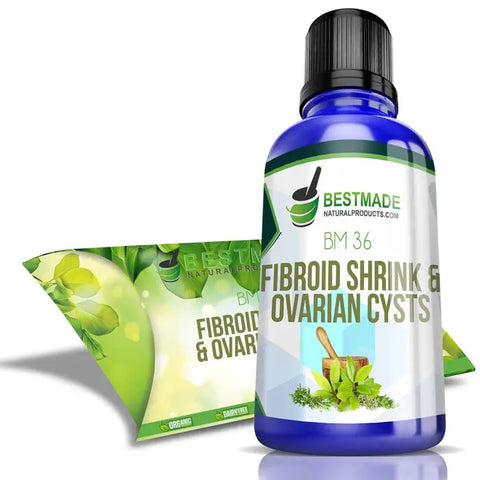
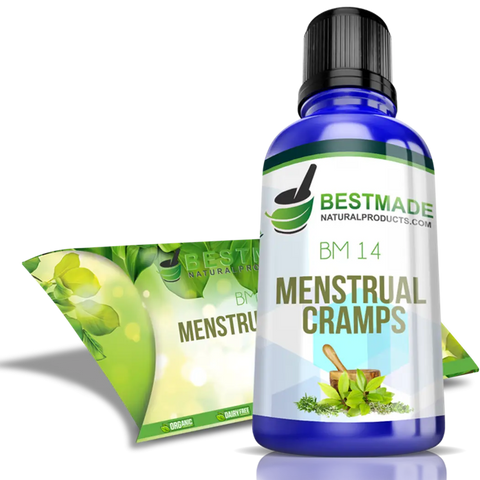

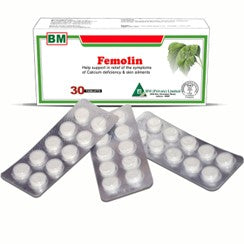
Laissez un commentaire